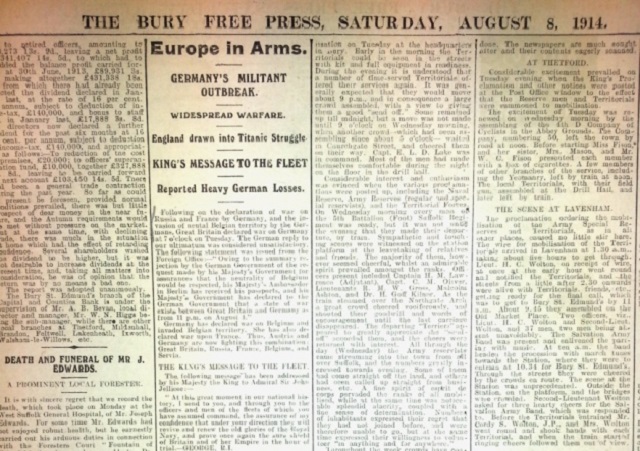The WWI outbreak would sound to most people as if it would have been the top story for any newspaper in 1914. It was certainly the most major event going on anywhere in the world, and the news did in fact spread like wildfire. Interestingly enough, however, it was largely spread by word of mouth. This was how a great deal of news used to be spread, which is particularly lucky since the WWI outbreak was relegated to the fifth page of the newspaper.
Of course, not every newspaper reported the war on the same page. While the Bury Free Press may have relegated the news to this page, the Daily Telegraph was different. They did not report the war until two pages later. This would appear surprising to most people alive today. Most would expect that, if the WWI outbreak were to happen today, then just about every newspaper worldwide would report it on the very front page. In 1914, however, this was not an option. This is because the front page looked nothing like the ones we see today. Advertising went on the front of the paper, and the rest of the stories were generally organized in the same order they were received.
Newspapers were not just organized differently, but with the lack of today’s machinery, they were made in a very different fashion. As a newspaper company received new stories, they added them to a large stone template. This took time, and news of the WWI outbreak came at a time when many press companies were already in the process of creating their next paper. Rather than go back and redo the first few pages, they had to report the war on the page they were currently working on. They had to “hit the ball where it lies,” so to speak.
This manner of reporting resulted in stories that were somewhat scattered. News of the First World War rolled in constantly, with certain events coming to light after others had occurred. This meant that news of the WWI outbreak was accompanied by other news about the war, with many facts lacking any sort of formal organization. They simply did not have the time to follow the journalistic “pyramid” rule that is often utilized today, in which the most important facts are placed at the beginning of an article with less important details at the end, the Bury Free Press reports.
News of the WWI outbreak was naturally important, but many who do not understand how journalism worked in the early 1900s would never be able to tell by looking at their newspapers. This serves as an important lesson that certain artifacts from previous eras may be misleading if taken out of context with little knowledge of how the world worked at the time. Journalists did, however, learn from this “mistake.” After scattered and confusing stories of the WWI outbreak, many newspapers began creating war-related pages separately from the rest of their articles, and publishing reports on the war in the back or front of their papers.
